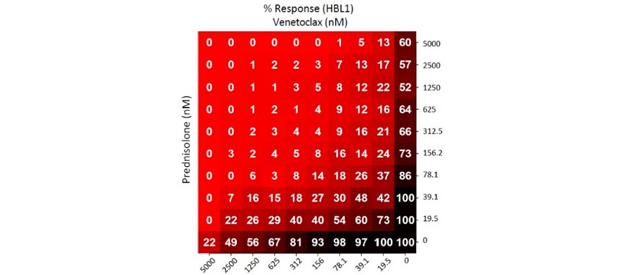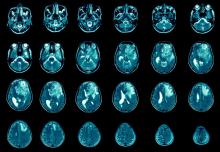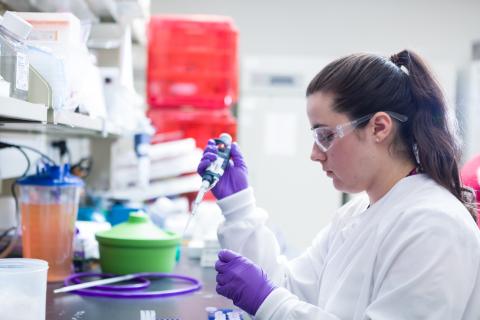Our Impact on Drug Discovery and Development
Our research teams develop and apply cutting-edge approaches that speed therapeutic solutions for unmet health needs.
Moving More Treatments from the Lab to the Clinic
A new drug’s journey from the lab to the medicine cabinet can take up to 15 years. On the way, it passes through dozens of steps — and potential failure points. As a result, many never get approved for human use.
For more than 10 years, we’ve been making the drug discovery and development steps faster and more predictable. We built a pharmaceutical collection of nearly every drug approved for humans. We also built automated solutions to swiftly test drugs or combinations of them for new uses, including emerging infectious diseases. Through our partnerships with academia, industry and patient advocacy groups, we have enabled more than 45 promising new drugs to move into clinical trials.
Our newer drug discovery and development efforts focus on preparing for future pandemics and building a one-stop shop for finding, designing and testing new molecules with therapeutic potential.
Impact Stories
New Screening Tool Could Rapidly Reveal Better Cancer-Drug Combinations

Scientists at NCATS and NCI designed a screening method that could help predict in the lab how combos of three or more cancer drugs will work in people.
NCATS Enables IND Clearances and Drug Approvals

Our labs play a critical, hands-on role in getting new therapies to patients by partnering to discover and develop drugs for rare diseases and other unmet medical needs.
Drug Discovery and Development Research Activities
We speed preclinical research on promising new medicines through a variety of research activities.

Assay Development and Screening Technology (ADST)
Our automation experts work closely with our lab scientists to support various research activities, including high-throughput screening, and assay development and optimization.

Matrix Combination Screening
Our experts use matrix combination screening technology to quickly identify promising drug combinations with the most potential to help patients.

Compound Management
Our compound management team uses sophisticated and automated techniques to supply chemicals for NCATS screening experiments to uncover new treatments for diseases.
Drug Discovery and Development Research News

NCATS Team Creates Novel Computational Pipeline to Find New Ways to Treat Glioblastoma
March 10, 2025 - NCATS News
- Analytical Chemistry
- Biomedical Data Translator (Translator)
- Informatics (IFX)
- Our Impact on Drug Discovery and Development
- Our Impact on Rare Diseases
NCATS scientists tested a new method that could identify existing drugs effective against glioblastoma, a type of brain cancer that currently has no adequate treatments and a very low five-year survival rate.
Read ArticleNCATS Team Creates Novel Computational Pipeline to Find New Ways to Treat Glioblastoma
March 10, 2025 - NCATS News
- Analytical Chemistry
- Biomedical Data Translator (Translator)
- Informatics (IFX)
- Our Impact on Drug Discovery and Development
- Our Impact on Rare Diseases
NCATS scientists tested a new method that could identify existing drugs effective against glioblastoma, a type of brain cancer that currently has no adequate treatments and a very low five-year sur
A New Triple Combination of Inhibitors Based on Precision Medicine Emerges as a Potential New Treatment for Malignant Peripheral Nerve Sheath Tumours
January 28, 2025 - Grantee/Partner News
- Our Impact on Drug Discovery and Development
Announcing the 2025 Annual Achievement Award Winners for SLAS Discovery and SLAS Technology
January 13, 2025 - Grantee/Partner News
- Our Impact on Drug Discovery and Development



